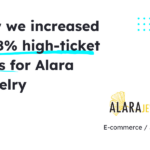
There are more than five billion internet users worldwide and 252,000 new websites are being created every day. With these numbers growing and the digital world expanding, we can no longer ignore the very physical impact our websites have on the environment and the need for each business to have a CO2 neutral website.
The Web’s Environmental Impact
Websites are an accumulation of web pages, content, and the programming language used to create and design a website. It may appear to be a virtual concept and it can often be hard to understand the physical impact this collection of data can have. Websites are stored on servers, powerful computers, that are housed in data centers. The more data our websites have the more storage we require. The more storage that is used the more energy is required to transfer that data between the server to the end user.
Data centers rely on electricity and certain resources to ensure they are powered, protected, and functional. From the electricity to the cooling down systems to the batteries to the generators to the fire protection system; running and maintaining data centers collectively contributes to 2% of the total global greenhouse gas emissions.
Automatically Make Your Website Carbon Neutral
Pathmonk Climate automatically offsets your emissions through high-quality climate projects, while analyzing and calculating your website’s carbon footprint. Showcase your climate actions with your zero-emission website certificate.
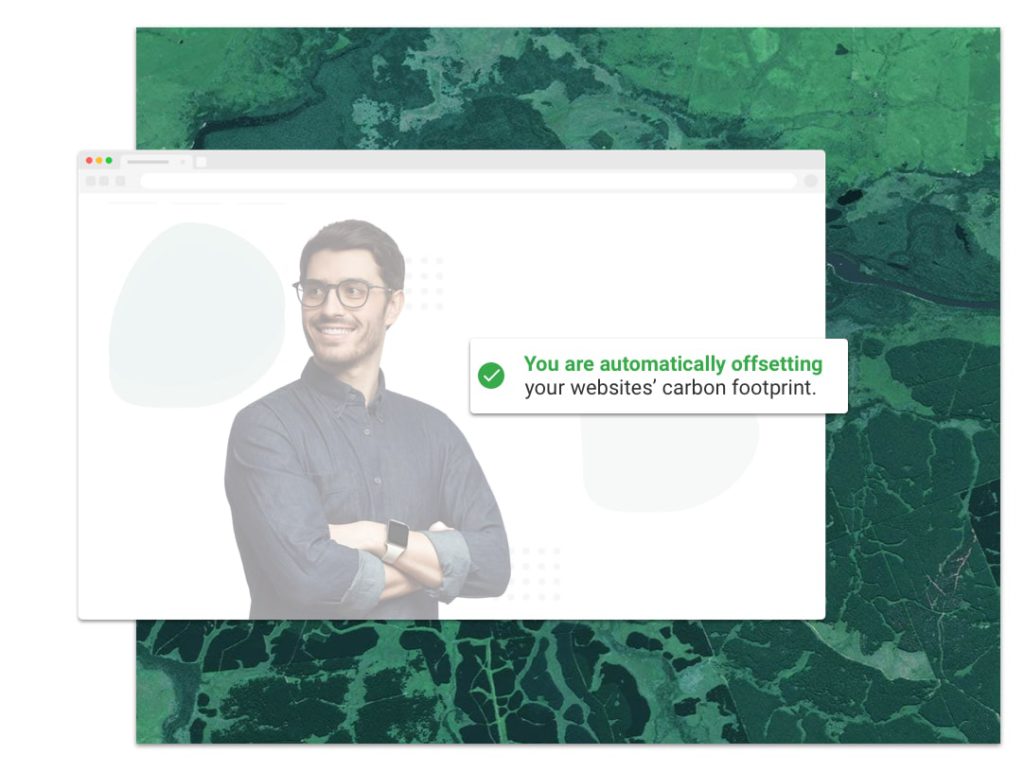
Every website is different. Some are designed more simply, carrying less data and ultimately requiring less storage and less energy. Contrastingly, other websites with data-heavy animations, complex buying journeys, and overloaded assets can collectively contribute to global energy consumption as high as 10 billion kilowatt-hours (kWh). That is equivalent to the output of two large nuclear power plants!
Between the resources required to store our data, the networks used to connect the internet, the energy consumption of our end-users devices, and the rapidly expanding digital world it can feel like there is very little we can do as website owners and creators. But we believe differently, if we work to create sustainable websites, reduce our website’s carbon footprint and ultimately achieve a CO2 neutral website, we can all contribute to a better web and environment.
So What is the Impact of a Single Website?
Although changing all the time, on average, a website emits 6.8 grams of carbon dioxide per page view. If a website has 10 000 page views a month, you’ll be emitting 816kg of CO2 per year.
Let’s Put That Into Perspective
I love to travel, it’s one of my life’s passions, but I am acutely aware of the impact a seemingly harmless 1-hour flight can have on the environment. A flight on a Boeing 737 generates 115 grams of carbon dioxide per passenger per km. Based on the average website emissions above, you’ll be traveling over 7095kms. That’s 12 flights between Düsseldorf, Germany, and London, England. I travel this route often to visit family, but never this much. It can be scary to think that a ‘virtual’ website can have more damage than the amount I could travel in a year. This really highlights the need for a CO2 neutral website.
Cars are known as one of the largest polluters, as we all scramble to use public transport more and opt for electrical vehicles instead. A car emits about 650 grams of CO2 per km. You’ll be able to travel over 1255 km based on how much an average website emits.
With a lightbulb consuming 0.06kwh per day, you’ll be turning on a light bulb 24 082 times. Additionally, you’ll be charging 28 898 phones, with a fully charged phone consuming 0.05kwh, on average.
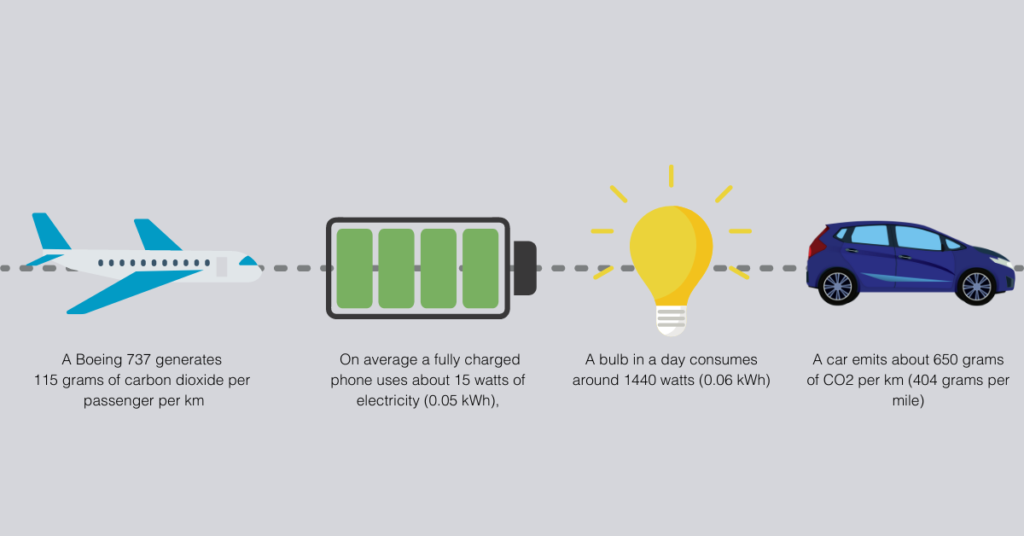
Again, let’s visualize what we have to do to compensate for the emissions of an average website. A single tree absorbs approximately 25kg of CO2 per year. We will therefore have to plant 33 trees. We will need 7224 square meters of solar panels to compensate for our carbon emissions, this is roughly the size of a football field.
With one full rotation of a wind turbine, you can generate 291 kWh, this means we will require 5 turns to compensate for our emissions. Recycling one kg of plastic saves about 57.74 kWh of energy, we will need to recycle 25kg to create carbon neutrality.
Visualizing the impact of an average website can really put the environmental damage into perspective. With growing emissions, we’d like to help businesses like yours obtain a CO2 neutral website. It’s good for business and it’s good for the planet.
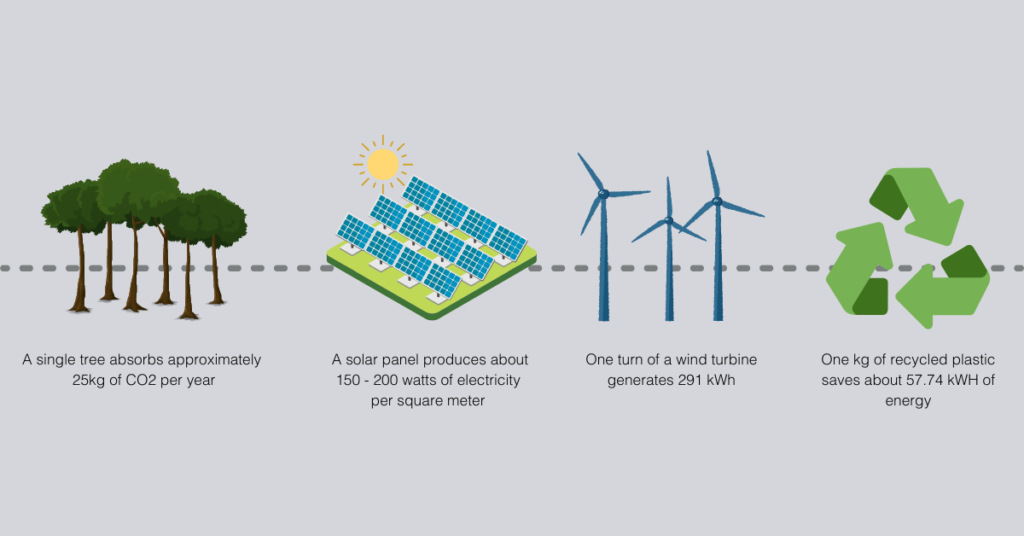
What is a CO2 Neutral Website & How Do You Achieve It?
A CO2 neutral website is a website that balances the amount of carbon dioxide emitted into the atmosphere with a source that can absorb the equivalent amount; ultimately neutralizing the overall emissions.
Step 1: Reduce Your Carbon Footprint
Websites are ever-changing and ever-adapting; those of us who evolve to what both our customers and climate need, survive. We’re always testing and reviewing our websites, refining messaging and content. So take a deeper look into what elements make up your website from an environmental point of view. Optimizing and simplifying can drastically reduce the weight of your website; resulting in fewer carbon emissions.
With our ultimate guide to a sustainable website and tips for optimizing your buying journeys, you can empower your prospects, improve website traffic, and increase conversions. Ultimately creating a top-performing website while contributing to climate change.
Step 2: Offset Your Website Emissions
To truly achieve a CO2 neutral website you must offset your emissions. We have limited control over all the elements that power the web. So even with your sustainable website design and CO2 reduction efforts, you’ll still be emitting carbon emissions. Therefore we must compensate for these emissions through climate projects. Doing it for the environment should be enough motivation but we’ve got even more reasons to inspire your sustainability efforts and achieve a CO2 neutral website. The best part is that Pathmonk can help you.
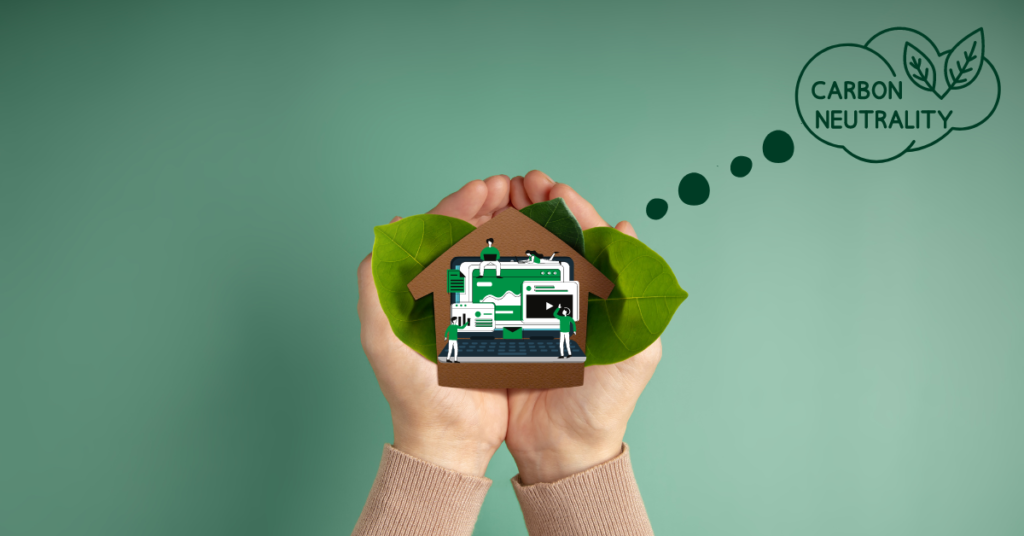
How Pathmonk Helps
It can take effort and money to find the best offsetting solutions so Pathmonk Climate helps you do this automatically. By understanding the true impact of your website with Pathmonk Climate’s automatic analysis and custom website emission report, you can create a CO2 neutral website by offsetting your carbon emissions. Through high-quality climate projects that compensate for the amount of carbon dioxide in the atmosphere, you can actively contribute to a better global climate.
How To Do More: Help Us Spread the Word
With these 3 easy steps, Pathmonk Climate will provide you with a certificate. With your CO2 neutral website certification, you can share your climate actions with visitors, investors, and the world. By placing your CO2 neutral website badge on your website you’ll be letting everyone know that you’re committed to climate change and that you’re actively contributing to the global responsibility we all have. As people visit your website and notice your efforts they too can start to consider website sustainability and neutrality.
Automatically Make Your Website Carbon Neutral
Pathmonk Climate automatically offsets your emissions through high-quality climate projects, while analyzing and calculating your website’s carbon footprint. Showcase your climate actions with your zero-emission website certificate.


